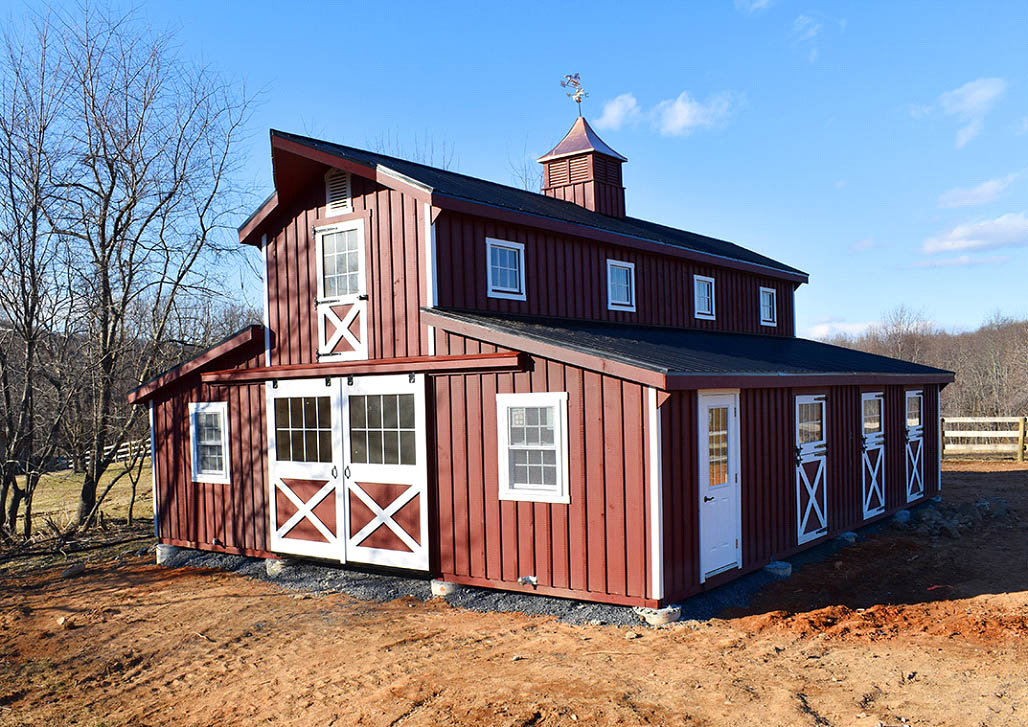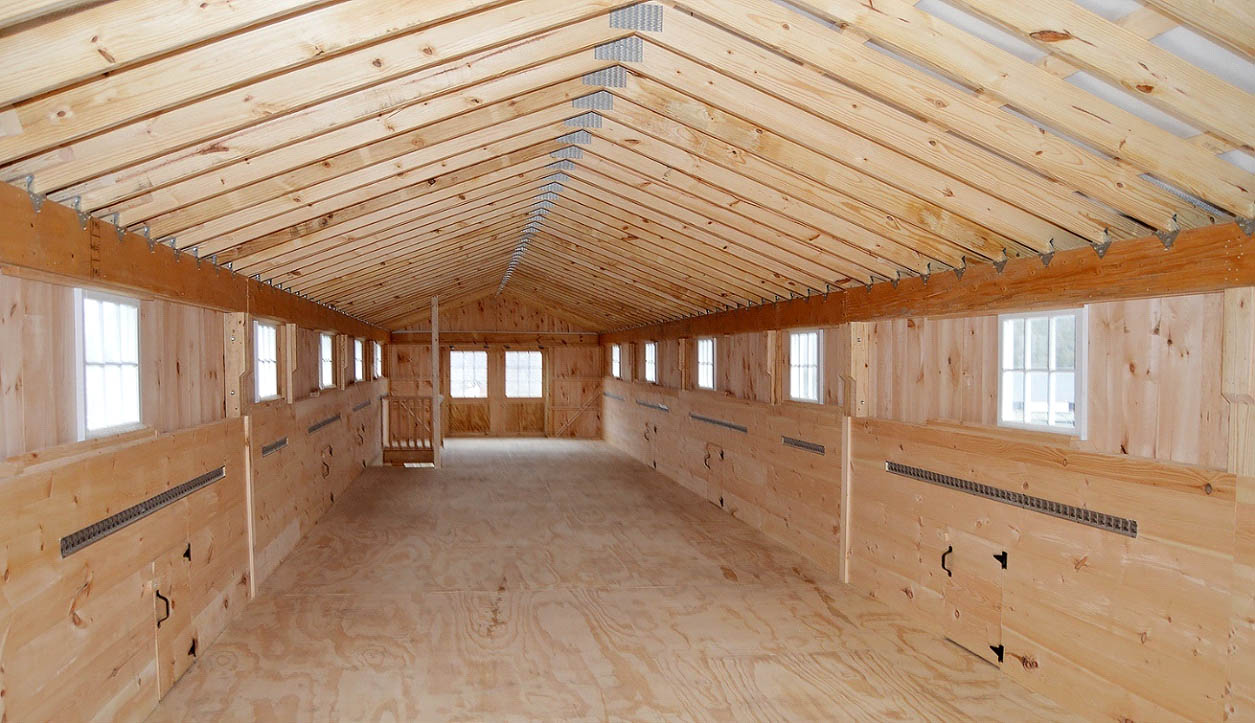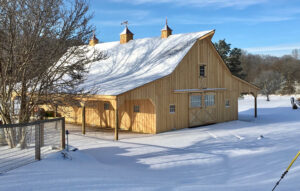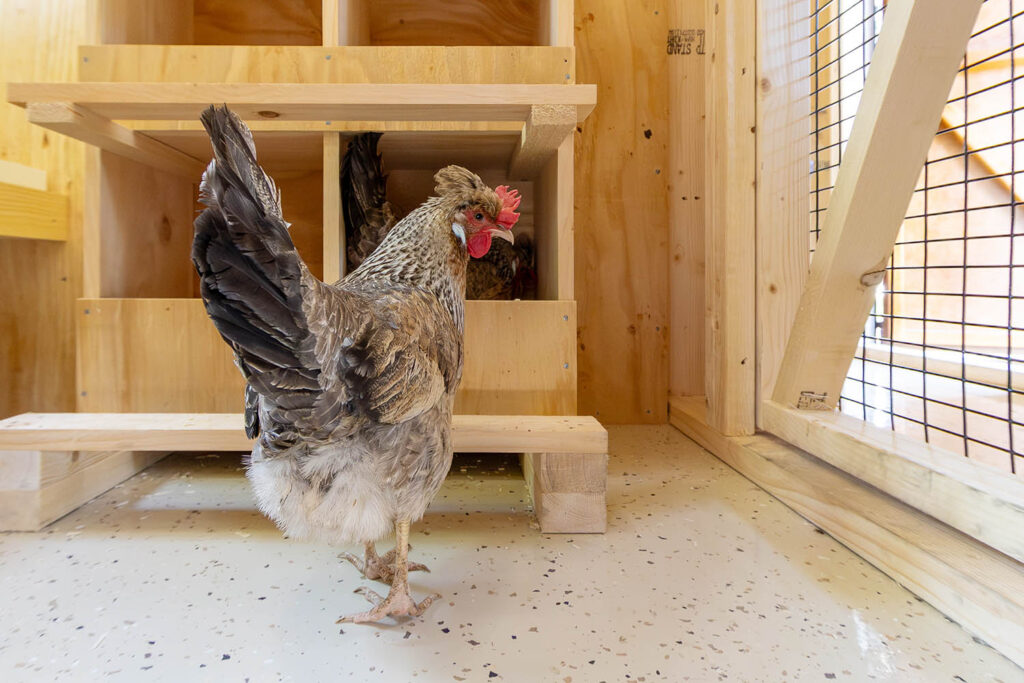The familiar design of the Monitor Style Barn was an advance in architecture that evolved eons ago to address the need to provide better air circulation for the health of livestock and the safe storage of hay and grain.
Of course barns built to house livestock, hay and grain, have been a necessity across the world for centuries and their styles have changed as mankind has realized the shortcomings and advantages of the different shapes and sizes of barn construction.
Over time their uses have become more and more specialized. In the later 1890’s the development of a new roof system, the monitor roof, provided farmers with much needed additional ventilation to help negate the negative impact of bacteria on grains and crops and improved the health of their livestock during long winter months where access to fresh air was hindered by poor weather. The monitor roof design increased both natural light and improved air circulation.
This simple development in design elevated the usefulness of the barn in daily use by extending its seasonal benefits for a wider variety of weather patterns. The Monitor Barn plan is likely the forerunner for the center aisle barn or the ‘American’ barn (as our neighbors across the pond call it).
Construction Couldn’t Be Simpler
Think of a monitor barn design as three separate boxes, one on each side of an aisle and a third above that creates a roof. The boxes on each side are perfect for housing livestock in stalls such as horses, or housing cattle for milking.
A loft or floor could be added to the second story above the aisle to store grain and hay, and openings in the gable ends could move air through the loft space. Often hatches in the loft floor provided chutes to feed the livestock below with grain from the threshed crops stored above, and hay could be dropped into the stalls below for dry feeding of horses.
This design was popular into the 1920’s where monitor barns were very popular in New England. A great example is the monitor barn ‘West Monitor’ in Richman, VT.
Warm In Winter, Cool In Summer
The central aisle of the Monitor style barn can be carefully positioned on site to allow cool summer breezes to pass through the building from sliding doors on the gable ends of the structure, while placed to avoid the prevailing direction of the wicked winter winds.
The raised center roof enables air to be drawn in from open doors on both ends of the aisleway on the lower floor and rise above, where windows on each side of the top tier dissipate the heat while allowing bacteria killing natural light and fresh air to enter the building. Essentially, a shaft system that moves air from the ground up into the rafters and out through the sides.
In long winter months the loft area above (if constructed), can be used for efficient feeding of the livestock below from the stored hay or grain supplies stored above. The doors on each gable end can remain closed and used only for access, and windows can be fastened shut or partially opened to allow for additional ventilation in Spring and Fall months or to release radiated heat from the livestock below.
Horses and other livestock use evaporation to stay cool in hot weather, and passive airflow can greatly improve their ability to release heat from their body surface and thus minimize heat stress in hot climates.
The Perfect Product For Transport
Today, the process of building a monitor barn is as simple as 1,2,3 as the construction lends itself well to modular building and is a quick and easy set up. The 3 boxes, two for stalls on each side are set a distance apart, and the third box is simply added on top, without a loft floor.
The ‘instant’ nature of the modular barn purchase means you don’t have to deal with the noise, mess and hence stress of having a construction crew up and down the driveway for weeks on end hammering away on a pole built barn.
You can construct all three boxes to your custom design and have built in the factory where weather delays are never an issue. A good modular building company will give you engineer approved plans for permits and ensure the build meets or exceeds your local snow and wind load requirements.
Stalls, aisles, and loft space can be sized for your particular needs, sided and roofed with traditional wood or more modern products such as LP Smartside (which is great as it is almost maintenance-free), and the stalls pre-finished with oak kickboards, stall doors, and windows, and a tack room and feed room.
The 3-box structure of a monitor barn means transportation is straightforward, and set up requires a small crane to lift box 3 into place on top, where it is then secured for a watertight finish.
The Monitor Barn Offers A Budget Friendly Barn Building Choice
The simplicity of the monitor design has meant it has maintained its popularity, as it is affordable.
The cleverness of the design means not only great ventilation for the health of your horse especially if there is no loft floor added, yet also offers storage above in a full or partial loft space for hay and provisions if that is required.
An iconic design that has withstood the test of time, the Monitor style barn enjoys significant popularity today. While the time-tested historic Monitor barns across the U.S.A. may have long been converted to uses as homes and wedding/event venues, the horse owners of today still embrace its innate practicality for purpose.
Form and function always win out in architectural relevance that withstands the test of time.



















